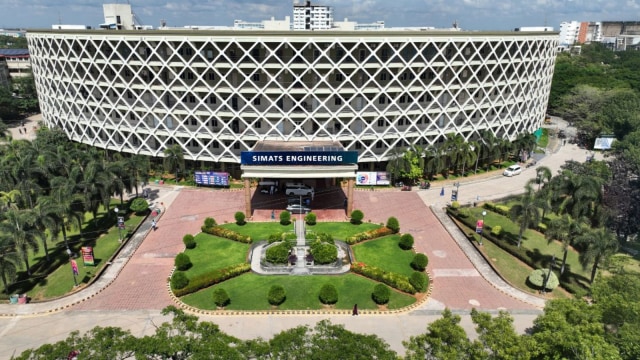India emerges as the ‘most represented country’ in THE Interdisciplinary Science Rankings 2026
While premier institutions like IITs continue to boycott the THE ranking, Saveetha Institute of Medical and Technical Sciences emerged as the top-ranked university from India, securing the 57th position globally
 Saveetha Institute of Medical and Technical Sciences secured the top rank from India. (Image: official website)
Saveetha Institute of Medical and Technical Sciences secured the top rank from India. (Image: official website)Eighty-eight Indian institutions have featured in the Times Higher Education (THE) Interdisciplinary Science Rankings (ISR) 2026, making India the most represented country on the global list. The ISR 2026 ranks 911 universities across 94 countries, up from 749 in the first edition.
While premier institutions like IITs continue to boycott the THE ranking, Saveetha Institute of Medical and Technical Sciences emerged as the top-ranked university from India, securing the 57th position globally. It is closely followed by VIT University at rank 59 and Anna University at joint 67th place. Jamia Millia Islamia, positioned at 80, leads the performance among central universities, while SRM Institute of Science and Technology (89) and Amity University, Noida (97) also feature within the global top 100.
Times Higher Education is a UK-based magazine that releases an annual ranking of global and Asian universities, among others. The rankings, conducted in association with Schmidt Science Fellows, aim to benchmark how universities foster research that cuts across traditional academic boundaries.
One of the key changes in this year’s edition is an expanded definition of “interdisciplinary science.” In addition to traditional STEM (science, technology, engineering, mathematics) research, ISR 2026 now includes projects that combine scientific disciplines with non-STEM fields such as social sciences, law, economics, education, and clinical health.
The methodology behind the ranking relies on three core pillars, as per the press release. Inputs (19%) — measuring funds allocated to interdisciplinary research and industry support, Process (16%) — assessing infrastructure, administrative backing, promotion, and tenure policies for cross-disciplinary teams, and Outputs (65%) — the most heavily weighted pillar; includes publication volume, research quality, cross-disciplinary impact, and reputation among peers.
Despite India’s numerical lead, the top ranks remain dominated by US universities. Massachusetts Institute of Technology (MIT) retains its number 1 position for the second consecutive year, followed by Stanford University. In fact, seven out of the top 10 in ISR 2026 are American institutions.
The US excels particularly in the outputs pillar, scoring high on research quality, publication reputation, and peer recognition. However, its performance is less dominant in the inputs and process categories, suggesting that while U.S. institutions produce excellent interdisciplinary work, they may lag behind in institutional support and funding structure.
Phil Baty, THE’s Chief Global Affairs Officer, said: “The Interdisciplinary Science Rankings are designed to give interdisciplinary research more visibility, to shine a light on teachable best practices and to incentivise universities to further push the boundaries of human understanding.”
- 01
- 02
- 03
- 04
- 05






























